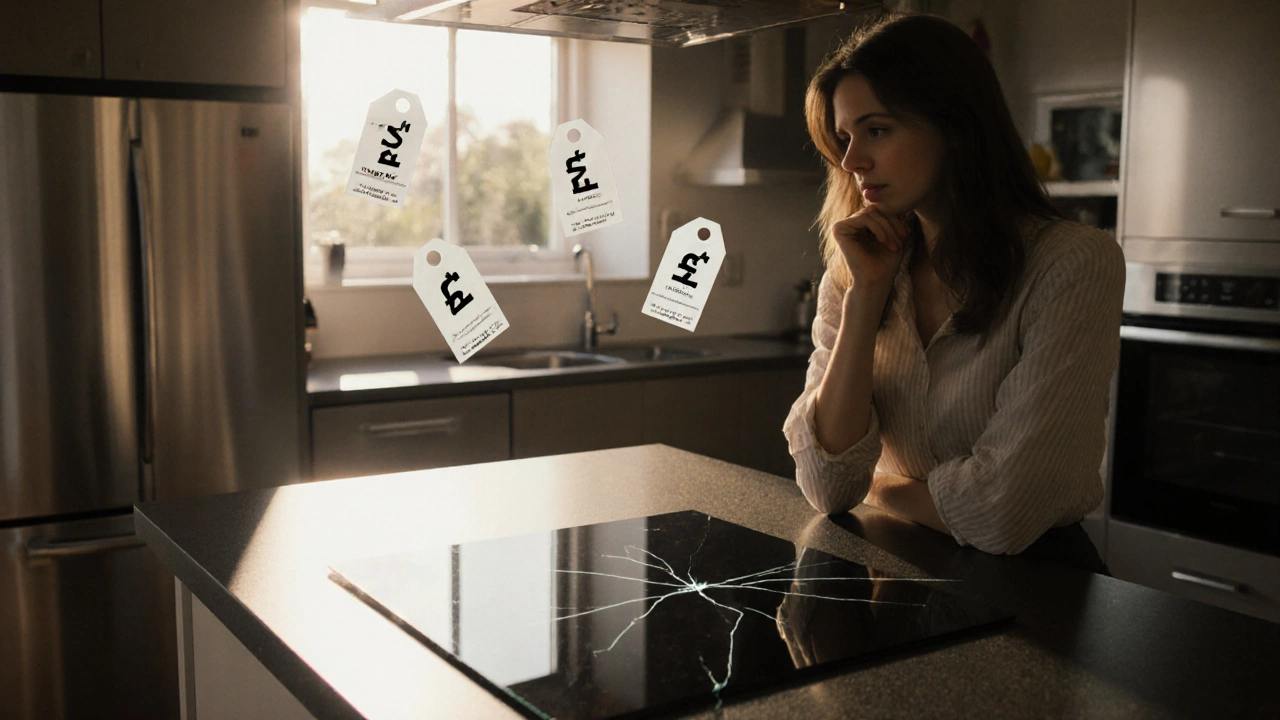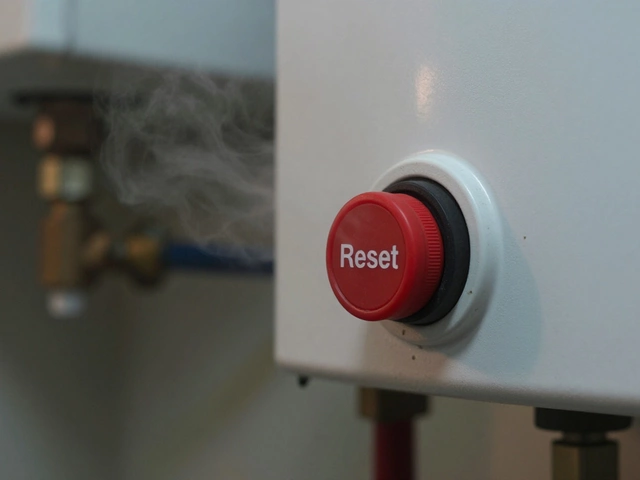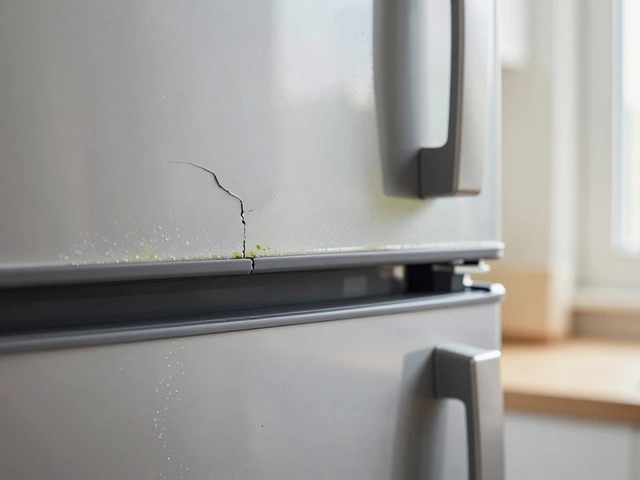When the glass surface of your stovetop cracks or shatters, the first thought is usually, "How much will this set me back?" The answer depends on the damage type, the brand, and where you live. In this guide we break down every cost factor you’ll meet in NewZealand, compare repair versus replacement, and give you a clear roadmap to keep your kitchen running without blowing your budget.
Key Takeaways
- Typical repair bills range from NZ$120 to NZ$500, depending on damage severity.
- Full glass panel replacements usually cost between NZ$350 and NZ$850.
- Labour rates in Auckland sit around NZ$80‑NZ$110 per hour; rural areas may be cheaper.
- Warranty coverage can slash out‑of‑pocket costs by up to 80%.
- DIY fixes are risky; a professional service saves time and prevents further damage.
What Is a Glass Hob?
Glass hob is a flat, tempered‑glass cooking surface that houses either electric coils or induction coils beneath a smooth pane. The glass layer distributes heat evenly and makes cleaning a breeze, but it’s also brittle enough to crack under sudden temperature changes or heavy impact.
Common Types of Damage
Understanding the crack pattern tells you how much you’ll pay.
- Surface scratches - Light marks that don’t affect heating. Usually a DIY polish fixes them, costing NZ$20‑NZ$40 for a kit.
- Hairline cracks - Small fissures that may spread if heated. Repair involves epoxy filler and a professional inspection, roughly NZ$120‑NZ$200.
- Chunky cracks or shattered panels - The glass breaks into pieces. You’ll need a full panel replacement, the most expensive scenario.
Cost Breakdown: Parts, Labour, and Extras
Below is a realistic snapshot for a mid‑range brand (e.g., Bosch, Fisher & Paykel) in 2025.
| Item | Low End | Average | High End |
|---|---|---|---|
| Labour (per hour) | 80 | 95 | 110 |
| Glass panel (OEM) | 250 | 400 | 550 |
| Glass panel (after‑market) | 180 | 300 | 420 |
| Epoxy repair kit (professional) | 120 | 150 | 200 |
| Service call fee | 50 | 70 | 90 |
| Travel surcharge (rural) | 0 | 30 | 60 |
Adding a 1‑hour labour charge and a standard service call, a simple hairline crack normally lands around NZ$200. A full replacement climbs to NZ$500‑NZ$850, especially if you opt for an OEM glass panel.
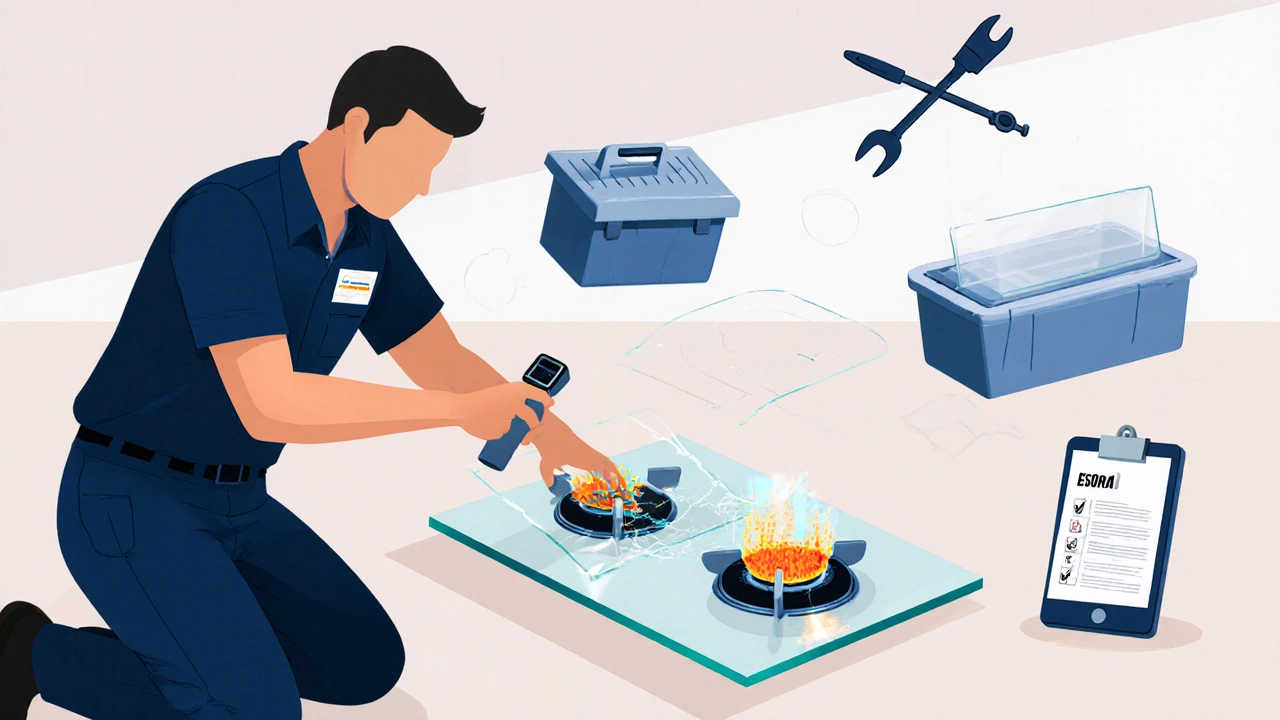
How Warranty and Insurance Influence the Bill
If your appliance is still under the manufacturer’s Warranty, you may pay only the service call fee. Many NewZealand warranties cover glass damage for the first two years, but they often exclude accidental breakage. Check the fine print: “Accidental damage” clauses can turn a free repair into a full‑price job.
Home insurance policies sometimes include ‘accidental appliance damage’ cover. A NZ$150‑NZ$300 out‑of‑pocket claim can settle a full panel swap, but you’ll need to file a loss notice and wait for the adjuster’s approval.
Choosing a Professional: What to Look For
Hiring the right Appliance Technician saves money and prevents further damage.
- Certification - Look for certificates from the New Zealand Appliance Technicians Association (NZATA) or similar bodies.
- Experience with glass hobs - A tech who’s repaired multiple brands knows the quirks of each OEM glass panel.
- Transparent pricing - Ask for a written quote that lists labour hours, parts, and any travel surcharge.
- Warranty on their work - A 90‑day guarantee on the repair gives you peace of mind.
DIY vs. Professional: When to Attempt a Fix
DIY can be tempting when you see a tiny crack, but remember:
- Temper‑tempered glass shatters under improper pressure. A wrong tool can turn a small hairline into a full break.
- Many repair kits claim to “heal” cracks, yet they rarely restore the panel’s structural integrity. A technician will test the panel with a heat sensor to ensure safety.
- If you miss a hidden fracture, you risk a sudden break while cooking - a safety hazard.
For scratches or surface marks, a Replacement Glass Panel isn’t needed; a $30‑$50 polishing pad works. Anything beyond that, call a pro.
Regional Price Variations in NewZealand
Auckland technicians charge the national average labour rate (NZ$95/hr). In smaller towns like Hamilton or Dunedin, rates dip to NZ$80‑NZ$90/hr. Rural travel surcharges of NZ$30‑NZ$60 can push a simple repair past NZ$250. Always ask for a full breakdown before the technician heads out.
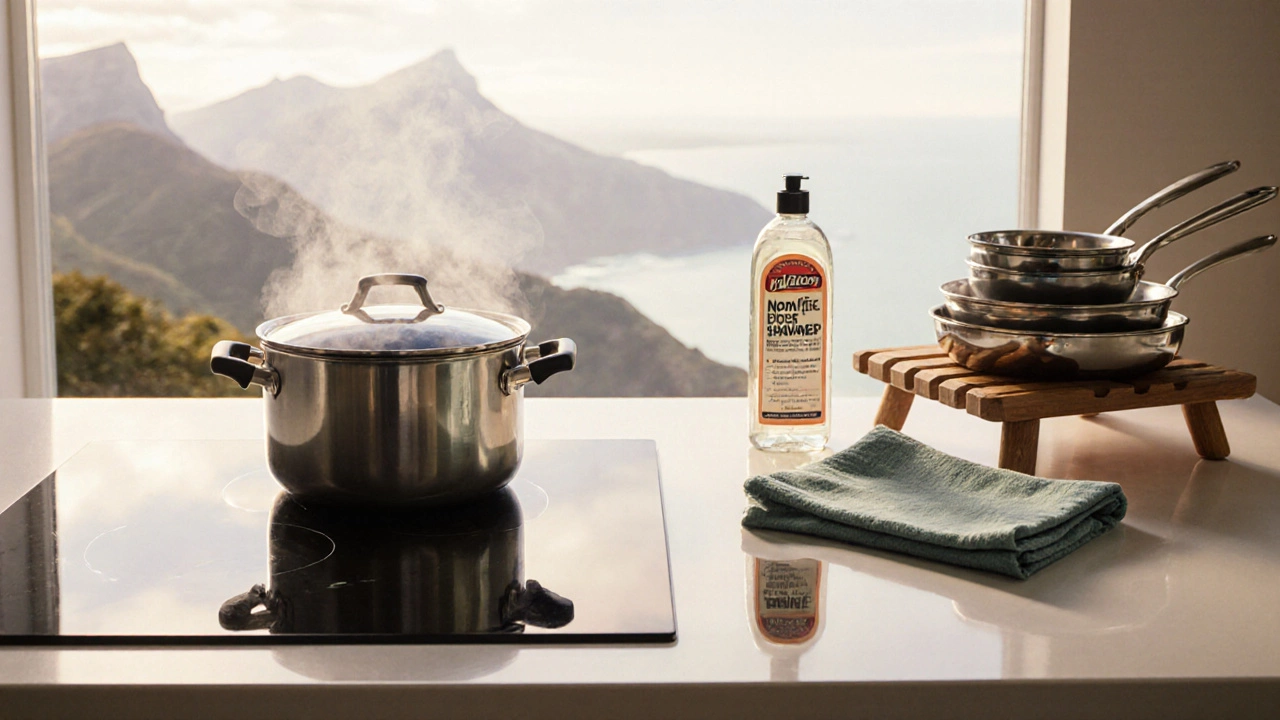
Step‑by‑Step: What Happens When You Book a Repair
- Contact the service - Provide brand, model, and describe the damage.
- Schedule a visit - Most companies offer same‑day or next‑day slots in Auckland.
- Technician assessment - The Appliance Technician inspects the hob, runs a heat test, and decides between epoxy repair or panel swap.
- Quote delivery - You receive a written estimate, often via email, that separates labour, parts, and extra fees.
- Approval & repair - Once you green‑light the work, the tech orders any required glass panel (OEM or aftermarket) and completes the fix.
- Final check - A post‑repair heat test confirms the hob heats evenly. The tech explains care tips to avoid future cracks.
The whole process typically takes 1‑2hours for a crack repair and 2‑4hours for a full panel replacement.
Preventing Future Cracks
Even after a successful repair, another break can ruin your savings.
- Use proper cookware - Heavy cast‑iron pans can stress the glass; stick to flat‑bottomed pots.
- Avoid thermal shock - Never pour cold water onto a hot hob. Let the surface cool before cleaning with cold water.
- Gentle cleaning - Use a soft cloth and non‑abrasive cleaner. No steel wool.
- Regular inspection - Spot a tiny hairline early and call a tech before it spreads.
Bottom Line: How Much Should You Expect?
For most Auckland households, a realistic budget looks like this:
- Minor scratch or surface polish - NZ$30‑NZ$60 (DIY kit).
- Hairline crack repair - NZ$150‑NZ$250 (labour + epoxy).
- Full glass panel replacement - NZ$450‑NZ$850 (labour + panel).
Remember, a valid warranty can slash those numbers dramatically, and insurance can cover the high‑end replacement. The key is to act quickly, get a written quote, and choose a reputable technician.
Frequently Asked Questions
Can I replace the glass panel myself?
Technically you can buy an aftermarket panel and install it, but the process requires special suction cups and sealant. A poor fit can cause uneven heating or break again. Most NewZealand homeowners prefer a certified technician to guarantee safety and warranty compliance.
Does my home insurance cover glass hob damage?
Many comprehensive policies include accidental appliance damage, but you must check the wording. Look for “accidental breakage” or “glass surface” clauses. If covered, you’ll only pay the deductible, usually NZ$200‑NZ$300.
How long does a glass panel last after replacement?
A quality OEM panel, installed correctly, can last 8‑12years - essentially the lifespan of the underlying heating elements. Proper care (no harsh cleaners, avoiding thermal shock) extends that life.
Will a cracked hob affect cooking performance?
Even a tiny crack can cause uneven heat distribution, especially on induction models where the coil sits directly under the glass. You may notice hot spots or longer boil times, which is why prompt repair is advisable.
What’s the difference between OEM and aftermarket glass panels?
OEM panels are made by the original manufacturer and match the exact specifications, color, and heat tolerance. Aftermarket panels are cheaper but may differ in thickness or tempering quality, potentially affecting durability.
